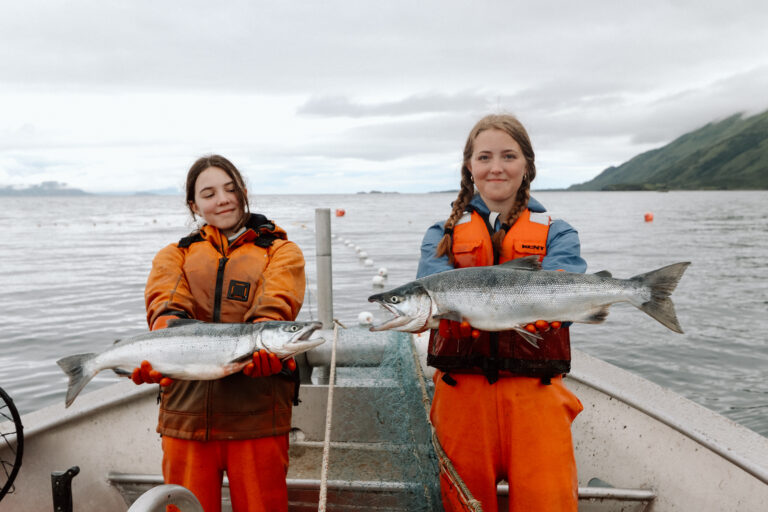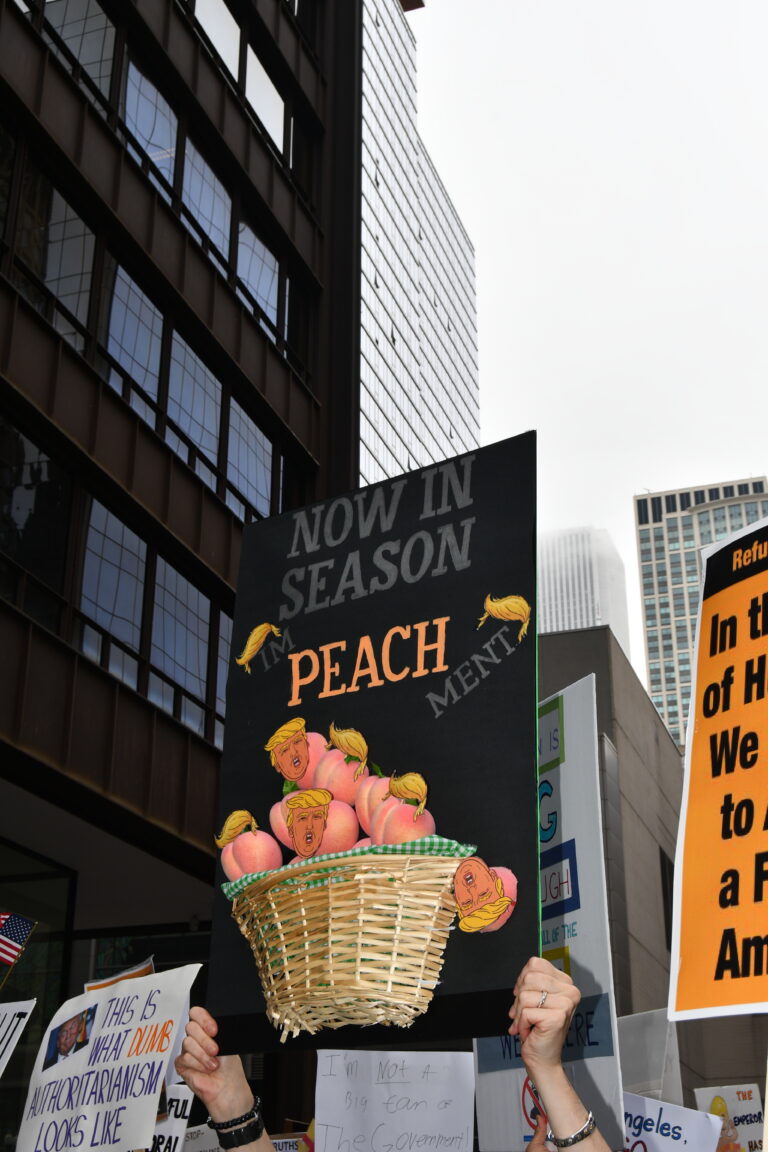
Buzz-Worthy Bites: Embracing Cicadas as Chicago’s Sustainable Superfood
This summer, millions, billions, trillions—and by some accounts, even quadrillions—of cicadas emerged from beneath us. So why don’t we eat them?
Starting in May, 13- and 17-year cicada broods (known more regally as Brood XIX and Brood XIII) emerged from the ground simultaneously on a scale that hasn’t been seen in 221 years.
And while it’s safe to assume you will find no shortage of the decibeldefying bug on trees, sidewalks and in your dog’s mouth, you might even find some on your dinner plate.
Cicadas aren’t on the food pyramid but they are an excellent source of protein, coming in at 100 grams per pound (similar to that of red meat). Not only is the environmental impact smaller than that of a cow, but they’re also keto-friendly, low-carb and low-fat.
On paper, cicadas should be in line to be crowned the next hot superfood.
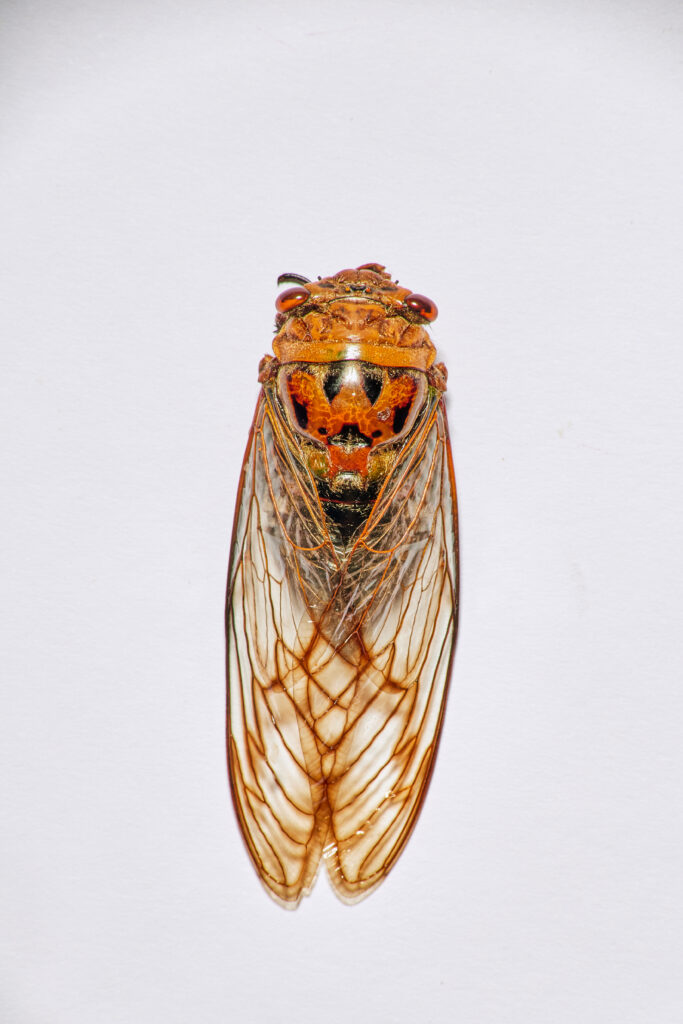
But unlike innocuous cruciferous vegetables or hearty legumes, cicadas—harmless to humans and the environment—have one charac – teristic stacked against them: they’re disgusting.
Piercing red eyes?! A cockroach-like exoskeleton?!! And they can fly?!!! No, thank you.
“Insects really provoke a lot of disgust responses for Americans, but around the world, people have a totally different relationship to insects,” said Gina Hunter, a professor of anthropology at Illinois State University and author of Edible Insects: A Global History. (Hunter is referring to the 2 billion people—or a quarter of the world’s population—who eat insects.)
But what makes insects any different from, say, a lobster, a bottom feeder with no discernment in its diet? Or its aquatic brethren—the crab, the shrimp, or the crawfish?
What’s our beef with bugs?
Our yuck, other’s yum.
According to the groundbreaking culinary guide CicadaLicious: Cooking and Enjoying Periodical Cicadas, entomophagy, or the practice of eating bugs, has existed since the beginning of humankind. For most of history, they haven’t been the objects of disgust but rather as a means of sustenance.
And a delicacy for some. For instance, in 350 BC, Aristotle wrote about consuming cicadas: “To begin with, the males are tastier to eat, but after copulation the females, because they then contain white eggs.”
But Western tastes changed. Like many unfortunate realities about our modern world, Hunter says disgust with insects can likely be traced back to colonialism in North America.
“At some point in time, it becomes a way of saying, ‘Those people eat insects, but we do not,’” Hunter said. “It became a mark of either backwardness, primitiveness or poverty.”
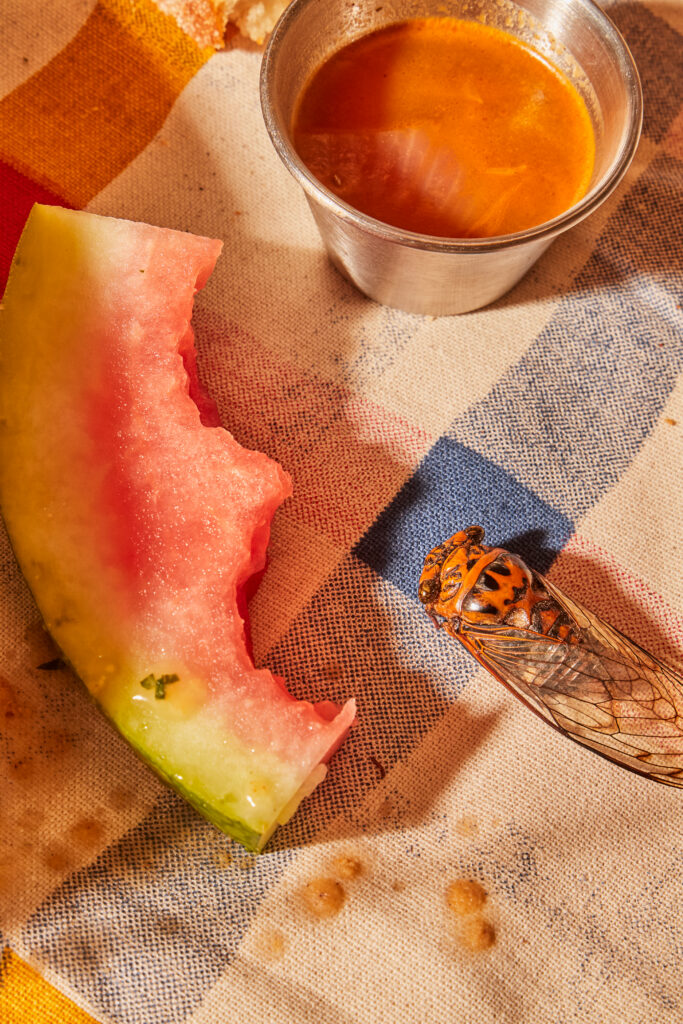
Though cultures have eaten insects forever, Westerners quickly disapproved of cicadas and other insects and ditched them as dirty when, in fact, the opposite is true.
Cicadas’ diet subsists on “pure and wholesome vegetable food,” wrote F.S. Bodenheimer in his 1951 ethnography Insects as Human Food, a fact that still holds today. Bodenheimer explains the cicada preparations of many North American Indian tribes, which included gathering the insects, removing their wings, and roasting them in a hot oven or boiling them on the stove.
“[W]hen the cicadas first leave the earth, they are plump and full of oily juices,” Bodenhiemer wrote, “so much so that they are employed in making soup.”
Our tastes have generally become more accepting in recent history. Due to globalization, the widening lens of what other cultures consider food, and a rising trend of sustainably harvested protein, insects aren’t as taboo as they once were.
But the question remains: Would you eat them?
On today’s menu
Do a quick search online for eating insects, and the algorithms will spit out plenty of challenge- or dare-style content. Framed as disgusting, the content rarely breaks through as something more than that.
But you don’t have to look further than in our own backyard to see the stigma being challenged.
For Jackie Hernandez, the chef de cuisine at Rick Bayless’s Bar Sótano in River North, having insects on the menu isn’t an attempt to elicit shock value. “In the U.S., [insects] are seen as kind of strange and weird,” Hernandez said. “But in Mexican cuisine, it’s very available and very open.
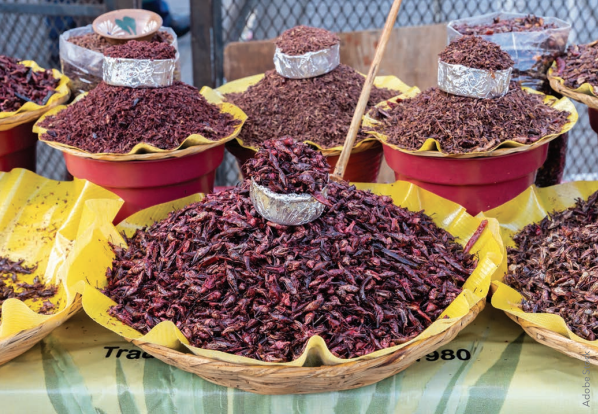
Hernandez, who is Mexican herself, notes the street markets in Oaxaca, where dry-roasted grasshoppers (“chapulines,” as they’re known), scorpions, mealworms, and other kinds of insects are stacked high next to nuts, beans and spices without discernment.
At Bar Sótano, chapulines, toasted and served with a squeeze of lime and a pinch of salt, are a part of the menu’s Oaxacan Drinking Snacks. In another dish, the Costillas Asadas, charcoal-grilled thin-cut short ribs are served with chicatana salsa, a hot sauce made from flying ants.
For the insect-uninitiated, Hernandez said her staff takes a “soft approach” to explaining to customers how to enjoy eating insects: as an accompaniment that enhances the rest of the dish, not as the main course.
“People are much more intrigued and willing to try it that way rather than being told to try it head-on,” Hernandez said.
This approach butts against a pervading sentiment we may feel: We live in a time where there’s an urgent demand for complete upheaval in our lives. You must change right now and never look back because this time? This time, things are different.
And yet they are not. Or rather, we are not.
“I started very enamored of the idea” of insects becoming a replaceable protein, Hunter said. But after writing Edible Insects, a stark reality set in for Hunter: “I ended up much more skeptical.”
Changing habits
In Western society, we have not pivoted toward eating insects, even as we praise their ubiquity elsewhere or their environmental impact. Like cicadas, humans are creatures of habit — we’re rigid in our ways, rarely emerging and diverting from what we know.
Will you start eating three square meals of cicadas? Will you start to think of your neighborhood trees as urban cicada farms? Is this the summer you become a cicada-fed baddie?
Probably not. But in these times of urgency and pessimism, there always exists a shimmer of hope: You can try.
Nina Salem is the founder and owner of The Insect Asylum, a nonprofit vintage taxidermy and insect museum in Logan Square. This summer, The Insect Asylum will celebrate the cicada’s emergence with Cicada Parade-a, which will feature cicada sculptures around Chicago and cicada-related events like cooking classes.
A former pastry chef, Salem is no stranger to cooking with insects and, in the past, has caramelized, sautéed, baked and even ground them into powders. Though her experience with eating insects may be more involved than that of the average home cook, Salem stresses the cicada emergence as an opportunity to get outside your comfort zone.
“If something is not going to inherently kill you, you should take every opportunity to feel safe and comfortable with trying things,” Salem said. She recommends lightly pan-frying cicadas and adding tangy or spicy seasoning, like how you might prepare shrimp or scallops.
Very soon, the buzz isn’t just going to be about whether we should eat cicadas—it will literally be all around us, a ceaseless droning hum that will be unlike anything we’ve heard before.
Perhaps you’ll decide to take matters into your own hands. You might go outside to scoop up a bagful of screeching cicadas, freeze and prepare them, and add them to a Cajun-style boil or as a crunchy salad topping, if only to prove a point: I made it stop.



